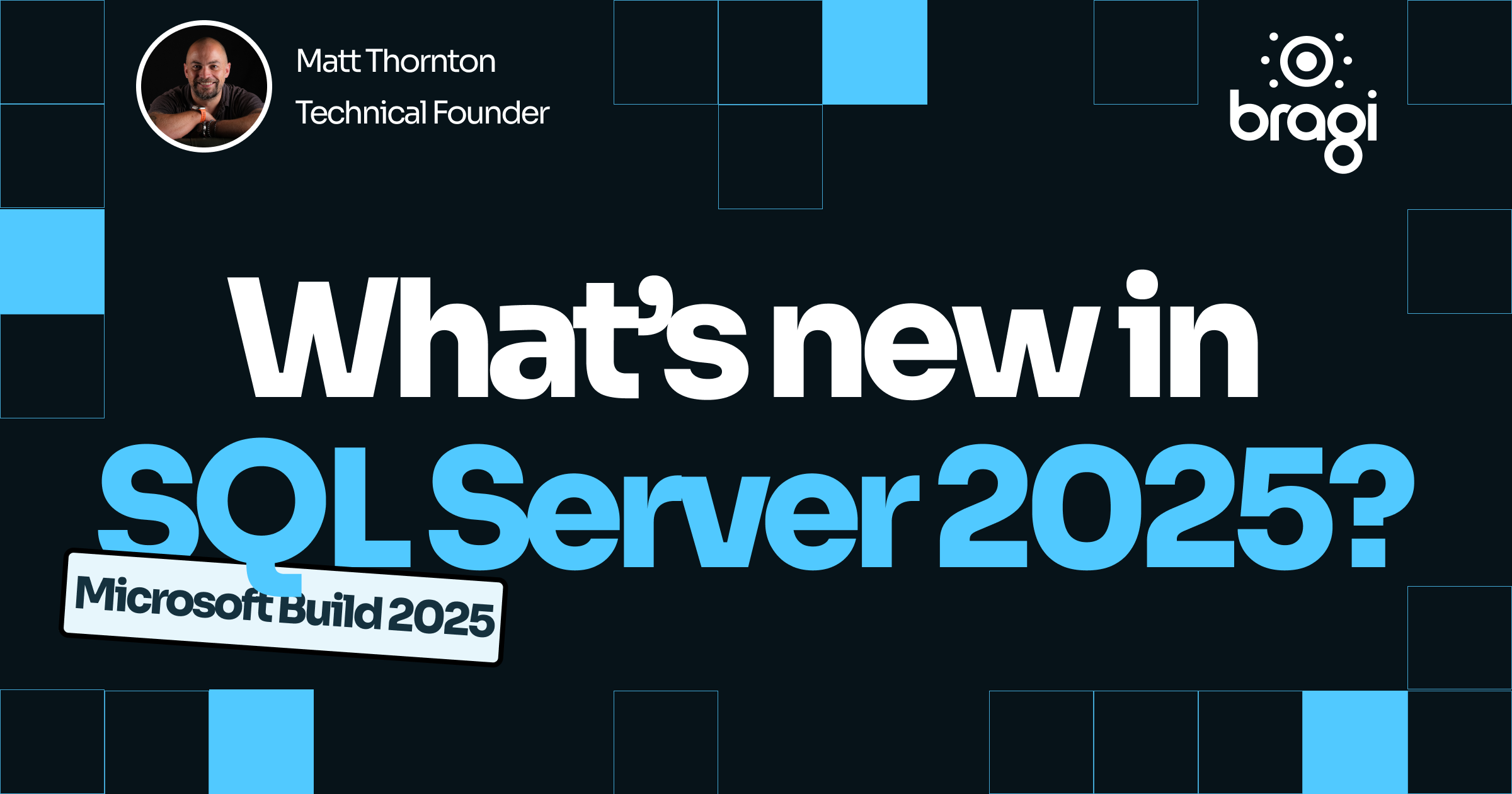What’s new in SQL Server 2025?
One of the most exciting announcements at Build in 2025 was SQL Server 2025 which is now in preview.
It is full of exciting updates and is shaping up to be one of the most developer-friendly releases Microsoft has shipped in years. It’s catching up to other database servers with some long-requested features, making life easier for those building data pipelines, AI integrations, and operational workflows.

Here’s a rundown of our favourite new features, and why they matter:
Improved vector support and external AI models
SQL Server and Azure SQL have supported vector datatypes for a while, but in a limited capacity.
Vector datatypes are important since they are very efficient on large operations, particularly applicable in machine learning applications. The update in SQL Server 2025 removes many of the restrictions, unlocking things like semantic search or retrieval-augmented generation (RAG) which can be run directly from the database.
There is now managed access to external AI models, which will mean you can remove a lot of the plumbing that had previously been required (“glue code”) and simplify the stack.
REST endpoint calls… from SQL?
You can now hit external REST endpoints directly from the database server using a custom stored procedure!
This will be really interesting as part of your event-driven / service-bus processes - for example you could now trigger a dashboard in Power BI to update after the data finished processing in SQL Server.
It will be interesting to see whether the implementation is asynchronous one-way or possibly two-way (i.e., data coming from the API beyond the status codes)?
Native JSON datatype (finally)
SQL Server 2025 treats JSON as a real data type, not just text blobs, and this goes a long way to catching up with PostgresDB which has had this for a long time.
This means you can store and query JSON fields without all the hacky casting and string manipulation - it kind of feels like a NoSQL database (your JSON) inside a SQL database! If that gets the best of both worlds then we love that idea!
Change event streaming + better CDC
One of the biggest issues in modern data warehouse environments is how to efficiently determine changing data without having to scan the entire dataset.
SQL Server 2025 improves its change data capture capabilities with configurable change events and tighter integration with external systems, so this will yield new opportunities for near-real-time flows without snapshotting whole tables!
This will be great for event-driven apps for business processes that require near-real-time reactivity, and we assume update the options around backup scheduling.
Regex, fuzzy joins, and better string logic
And finally: regex support, fuzzy joins, and a set of updated functions for dates (e.g. DATE_BUCKET), pattern matching, and string manipulation that doesn’t make you want to throw things.
This will really make the hardcore SQL guys happy who want to do as much as they can inside the SQL environment and not calling out to code.
So whilst it won’t completely remove the need for external code (such as Bragi’s code module) it should provide greater flexibility for some of those simpler requirements.
How Bragi fits in
A lot of these changes (esp. those aimed at developers) seem to be focused on elevating the platform capability of SQL Server moreso than really big changes in the SQL engine itself (although there are plenty of those too!)
There’s a clear emphasis on how SQL Server 2025 is expected to exist in modern data platforms, either as part of e.g., Microsoft Fabric or indeed facilitating the use of external models, AI and LLMs.
We’re really excited for these updates as many of them are naturally complementary to Bragi’s core proposition: orchestrating your data automation platform whilst leveraging the full power of the SQL engine for maximum performance.
We’ll be working on providing full support for these exciting new capabilities in SQL Server 2025 (and Azure SQL / Azure Managed SQL) over the coming months but in the meantime if you’d like more info why not explore Bragi’s feature set or talk to us about your pipeline setup!